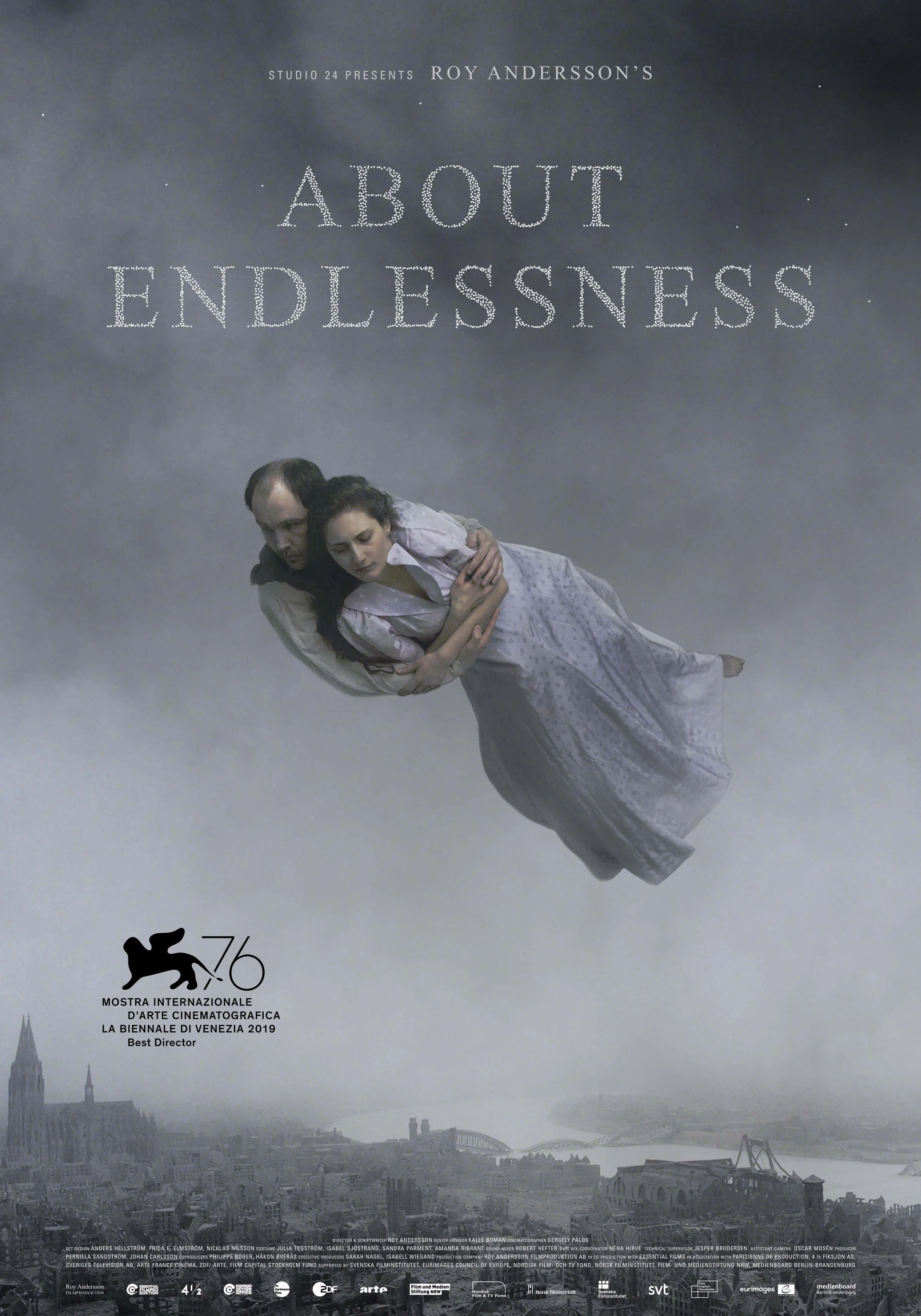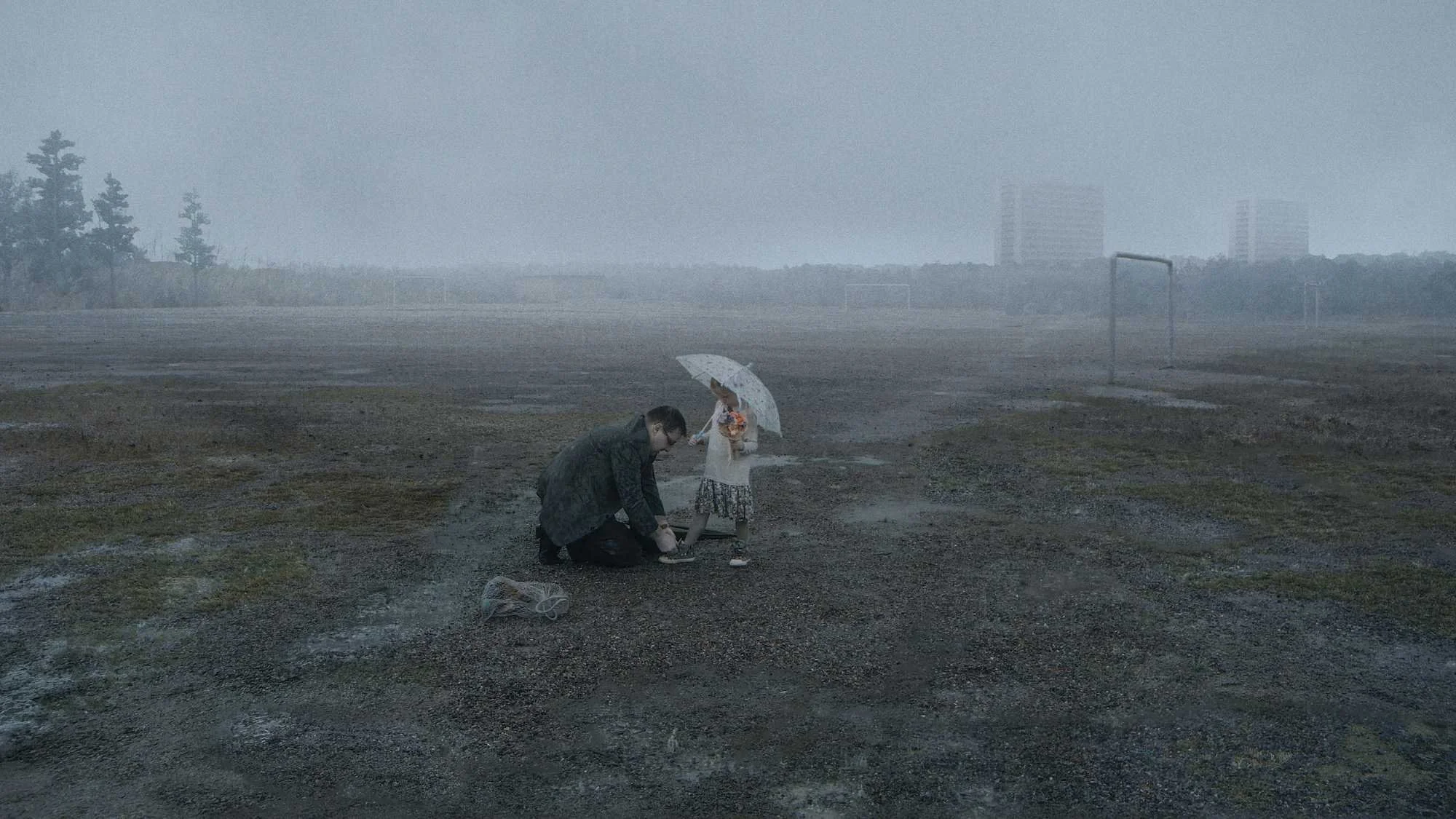About Endlessness (2019, dir. Roy Andersson, Sweden) by Matt Olsen
Over the last twenty years, the Swedish filmmaker Roy Andersson has made four hyper-individualistic features: Songs from the Second Floor, You, the Living, A Pigeon Sat on a Branch Pondering Existence, and his most recent, About Endlessness. The films’ similarity in structure, style, humor, appearance, etc., instantly identify them as unmistakably his.
Andersson prefers distance from his subjects. In terms of camera placement, absolutely – close-ups don’t exist – but there is also a narrative distance he achieves by only presenting limited scenes with each character. These brief vignettes are frequently disconnected from any other storyline and don’t provide many of the typical hallmarks of film storytelling technique, e.g., context, resolution, or consequences.
His films exploit the Swedish stereotype of emotional reserve. The majority of the citizens in the world of Roy Andersson are as still and quiet as the landscapes within which he places them. The occasional figures who display external turmoil may be met with slight embarrassment from their peers and professionals. In About Endlessness, one of the few recurring characters is a priest beset by a crisis of faith. His therapist’s reaction to the priest’s anguished plea for help is an almost apologetic and softly-spoken rebuttal to come back next week as he’s gently pushed out the door. A detractor could easily disparage his films as cold and detached but isn’t that what a neutral observer should be?
Though it’s present throughout his recent filmography, About Endlessness places the audience into an impartial onlooker role even more directly than previous. First, a pair of lovers locked in embrace hover beneath a bed of soft, gray clouds looking down on the gray city beneath them. Second, an unidentified narrator introduces several of the short scenes with “I saw a…” man, woman, child, etc., and a brief description of their plight, folly, goal, etc. Third, as mentioned above, Andersson keeps his camera several feet away from the subjects and it remains motionless. No cutting, no coverage. Each scene is a framed visual composition, exquisitely lit, and with minimal interior action. A truly objective study of the absurdity and tragedy of contemporary life on Earth requires a lack of trickery and manipulation.
His previous films hewed more toward the ridiculousness and though there are some elements of spontaneous joy and comedy in About Endlessness, a greater weight seems to be given this time toward the pain of existence. In addition to the priest’s predicament, there are scenes of violence, jealousy, and death. Three of the segments either directly or indirectly reference the horrors of World War II.
There is also the mundane. A teenage boy nervously watches (from a distance) as a girl waters a potted plant on the sidewalk outside a beauty salon window. The girl goes back into the shop. The boy remains for a few moments, looking at the place where she was. The narrator tells us “I saw a young man who had not yet found love.” End of scene. Those characters didn’t appear before and don’t appear again.
Because the presentation is the same, any contrast between monumental life events and smaller, personal moments disappears. All part of the life experience. It’s not a new or thrillingly profound sentiment but it is significant to remember and rare to see.
Matt Olsen is a largely unemployed part-time writer and even more part-time commercial actor living once again in Seattle after escaping from Los Angeles like Kurt Russell in that movie about the guy who escapes from Los Angeles.


